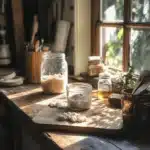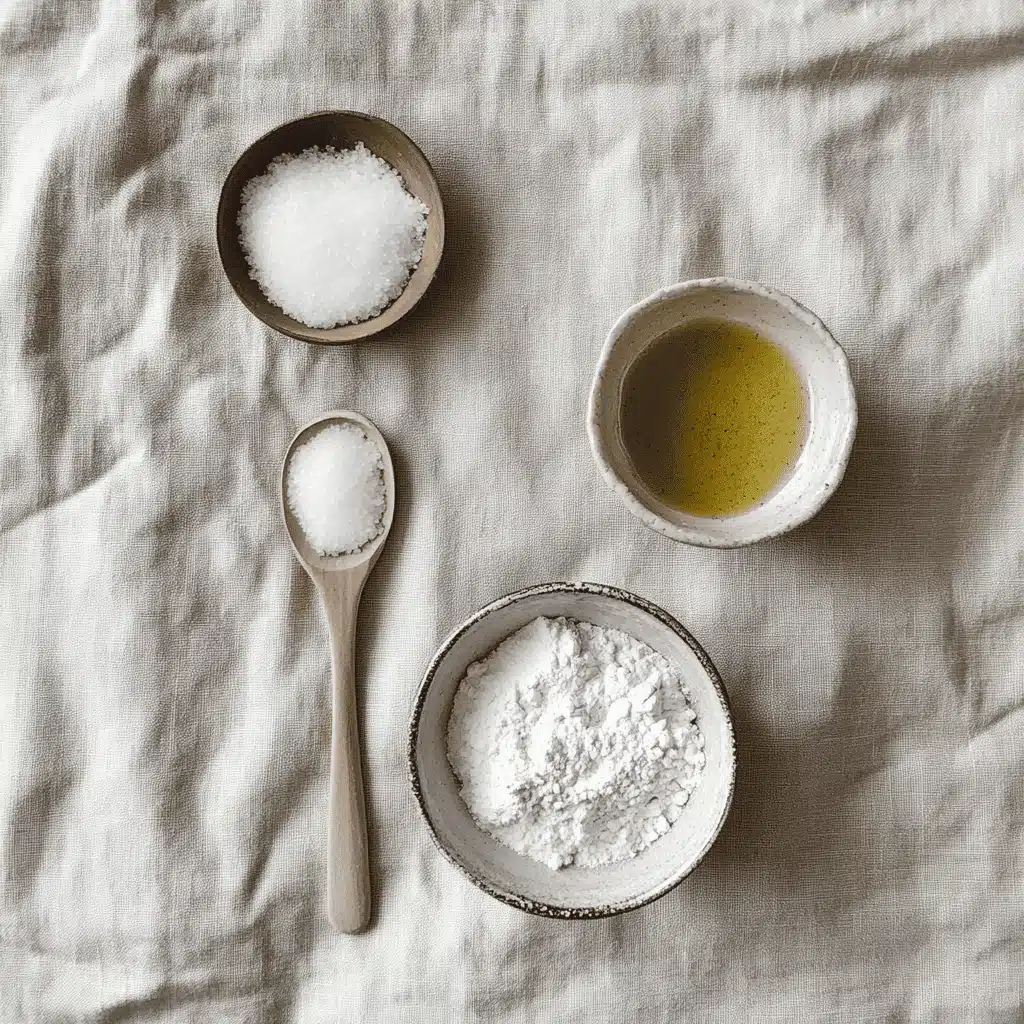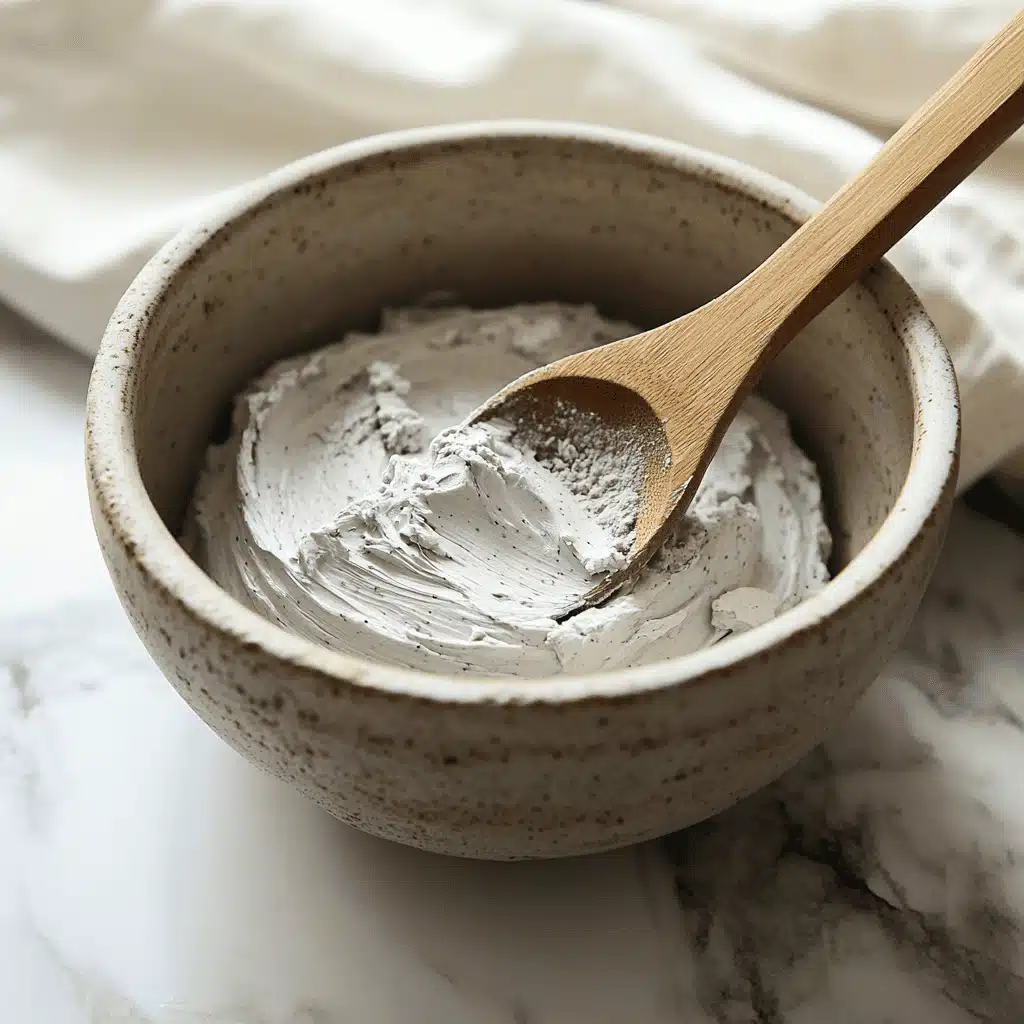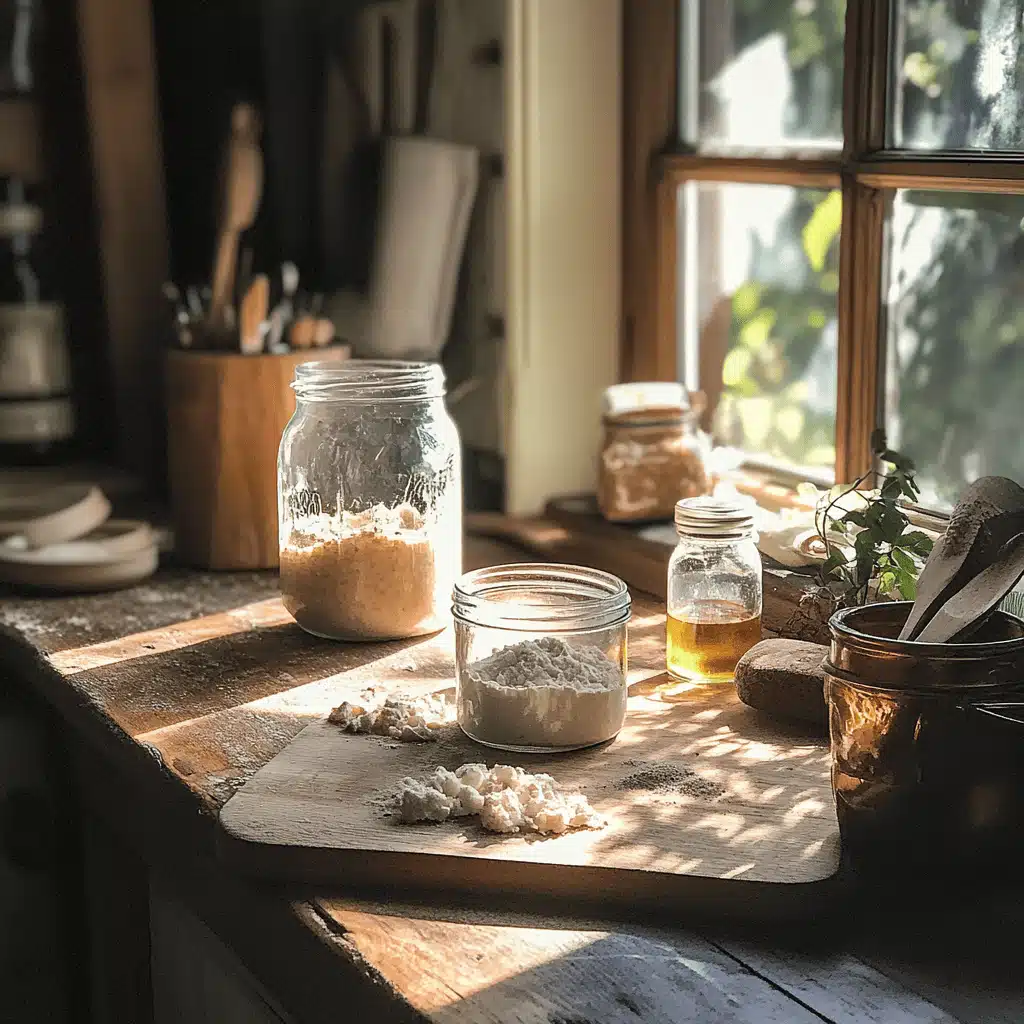It started like so many things on the homestead do—quietly, out of curiosity, and with whatever was already in the pantry. One brisk morning, I was sipping coffee and scrolling through my feed when I came across this video from Dr. Paul Saladino. He mixed up a simple toothpaste using coconut oil, bentonite clay, a touch of baking soda, and food-grade hydrogen peroxide. That video stopped me in my tracks—not because the idea was new, but because it felt like something I should’ve already been doing.
I’ve spent years raising children and chickens side by side. I know what goes into our food, our soil, and even our candles—but toothpaste? For years I’d let those little tubes slide by, never questioning the long list of ingredients. Seeing that TikTok hit me right between the eyes. If I can make my own bread, brew bone broth, and can tomatoes from scratch, surely I can make a natural toothpaste recipe that feels right in my mouth and in my heart.
So I did.
That afternoon, I melted down coconut oil, added bentonite clay until it thickened, spooned in a pinch of baking soda, and gently stirred in a splash of diluted peroxide. The texture was earthy and soft, the smell—faintly clay-like with a whiff of freshness. When I dipped my toothbrush in for the first time, it didn’t foam. It didn’t sting. But my mouth felt clean in a way I hadn’t noticed with commercial paste. That’s when I knew: this natural toothpaste recipe wasn’t just a novelty—it worked.
Simple Swaps, Big Wins
There’s something empowering about reclaiming even the tiniest part of your routine. Around here, we’ve already replaced so many store-bought standbys with homegrown options—like our powdered toothpaste recipe for travelers or baking soda and vinegar drain cleaner when the sink’s slow. Why not toothpaste too?
In fact, we lean on baking soda all over the homestead—from freshening rugs as shared in our baking soda on carpet guide to scrubbing garden grime from fingernails. It’s no stretch to imagine it cleaning teeth just as well, especially in a tried-and-true natural toothpaste recipe like this one.
What I love most about this natural toothpaste recipe is that it doesn’t try to mimic the store-bought kind. It doesn’t foam like a science experiment or smell like a candy cane. It just does its job, honestly and effectively—like so much else we trust around here.
Table of Contents

Natural Toothpaste Recipe That Actually Works (No Fluoride, No Junk)
- Total Time: 10 minutes
- Yield: 1 small jar
- Diet: Gluten Free
Description
Simple, safe natural toothpaste recipe using coconut oil, bentonite clay, baking soda, and food-grade peroxide. No fluoride or fillers—just clean, effective brushing.
Ingredients
• 2 tbsp coconut oil • 1 tbsp bentonite clay • 1 tsp baking soda • 1–2 tsp 3% food-grade hydrogen peroxide • 2–3 drops peppermint essential oil (optional) • 1/2 tsp xylitol (optional)
Instructions
1. In a non-metal bowl, combine softened coconut oil and bentonite clay. 2. Stir in baking soda until smooth. 3. Add peroxide one tsp at a time, mixing slowly. 4. Stir in essential oil or xylitol if using. 5. Spoon into a small glass jar with a lid. 6. Store sealed in a cool, dry place.
Notes
• Avoid dipping toothbrush directly in jar. • Use within 2–3 weeks. • Store in fridge in warm climates. • Not meant for swallowing. Use with supervision for children.
- Prep Time: 10 minutes
- Category: Toothpaste
- Method: No Cook
- Cuisine: DIY
Nutrition
- Serving Size: Pea-sized
- Calories: 0
- Sugar: 0
- Sodium: 1mg
- Fat: 5g
- Saturated Fat: 4g
- Unsaturated Fat: 1g
- Trans Fat: 0g
- Carbohydrates: 0g
- Fiber: 0g
- Protein: 0g
- Cholesterol: 0mg
Keywords: natural toothpaste recipe, DIY toothpaste, homemade toothpaste
Ingredients That Work Together

The beauty of this natural toothpaste recipe is how every ingredient serves a purpose—and nothing’s there just for show. No artificial foaming agents, no synthetic sweeteners, no long chemical names. Just pantry staples with real function, blended in a way that feels more like cooking than chemistry.
Coconut oil: smooth, soothing, and antimicrobial
Coconut oil forms the creamy base of the recipe. It holds everything together without hardening too much or turning runny. But it’s not just a texture booster—its antimicrobial properties can help reduce harmful bacteria in the mouth, especially those linked to plaque buildup. Plus, it adds a subtle sweetness that makes brushing more pleasant. In a good natural toothpaste recipe, coconut oil is a cornerstone ingredient.
Baking soda: mild abrasive and pH balancer
Baking soda has been a household workhorse for generations. On the homestead, we use it to clean everything from sinks to stains. In this case, it acts as a gentle abrasive that scrubs teeth without damaging enamel. It also helps neutralize mouth acids, keeping your oral environment balanced. For a deeper look into its uses, see how to brush teeth with baking soda, where I share exactly why it’s such a trusted ingredient—especially in any basic natural toothpaste recipe.
Bentonite clay: gentle detox and mineral support
You might not expect to find clay in a toothpaste, but bentonite clay has long been used to draw out impurities. It’s rich in minerals like calcium, magnesium, and silica—all of which can help support enamel strength. It also gives this natural toothpaste recipe its soft, earthy texture and contributes to its mild cleaning action. You’ll also find it featured in our powdered toothpaste recipe, where it works equally well in a dry format.
Hydrogen peroxide: natural whitening and freshness
Hydrogen peroxide can sound intimidating, but when used correctly—at a food-grade 3% dilution—it’s safe and effective. Just a teaspoon or two brightens the formula and gives a slight fizzy freshness. It also helps reduce bacteria and gently lifts surface stains. Dr. Paul Saladino’s TikTok video shows just how simple this addition can be, and it’s one I’ve come to appreciate for both function and feel.
If you’ve ever made a natural toothpaste recipe and felt like something was missing, a touch of peroxide may be the solution—it rounds out the formula and boosts that clean-mouth feeling.
Optional add-ins (but you don’t need them)
Once you master the base recipe, feel free to personalize it:
- A few drops of peppermint essential oil can add a clean flavor
- A pinch of xylitol (birch-sourced only) adds sweetness and supports tooth health
- A touch of activated charcoal for deeper whitening—though it can be messy
- Or trace mineral drops to support remineralization
Still, this natural toothpaste recipe is strong on its own. No frills, no fillers, just a clean blend that leaves your teeth smooth and your conscience clearer. The simplicity of a well-balanced, homemade recipe is what makes it shine—especially when compared to shelf products that leave you wondering what you’re really using.
A quick note on safety
Don’t swallow the paste. While everything in this recipe is edible in small amounts, toothpaste is meant to be spit out. If you’re concerned about peroxide or baking soda, remember that their levels here are mild and safe for daily use. If you’re unsure, talk to your dentist—and make sure you’re using real food-grade hydrogen peroxide.
This natural toothpaste recipe also holds up well with minor tweaks for kids or those with sensitive mouths. Just reduce the baking soda slightly and add a drop of oil for taste. That’s the beauty of it—you control every part.
Step-by-Step Natural Toothpaste Recipe

By now, you’ve got a good sense of why each ingredient matters. Let’s put it all together. This natural toothpaste recipe takes less than 10 minutes to make and stores well for weeks. No preservatives needed—just honest ingredients that work the way nature intended.
Ingredients (base recipe)
- 2 tablespoons coconut oil, softened but not melted
- 1 tablespoon bentonite clay
- 1 teaspoon baking soda
- 1–2 teaspoons 3% food-grade hydrogen peroxide
- (Optional) 2–3 drops peppermint essential oil
- (Optional) ½ teaspoon xylitol (birch-derived)
Step-by-step instructions
- In a small glass or ceramic bowl, add softened coconut oil.
- Stir in the bentonite clay using a wooden or silicone spoon (avoid metal—it can react with the clay).
- Sprinkle in baking soda and stir until smooth.
- Add hydrogen peroxide one teaspoon at a time, stirring gently. The mixture will loosen and lighten slightly.
- If using peppermint oil or xylitol, mix them in now.
- Spoon the paste into a small jar with a lid. Store at room temperature in a dry place.
This batch yields enough for about 2–3 weeks of twice-daily use for one person.
How to use your natural toothpaste
Dip a clean, dry spoon or spatula into the jar to scoop a pea-sized amount. Apply directly to your toothbrush. (Avoid dipping your brush straight into the jar—bacteria from moisture can spoil the mix faster.) Brush as usual for 2–3 minutes, spit, rinse with warm water, and enjoy that clean, clay-fresh feel.
If you’re used to the foaming from commercial pastes, give this a few days. You’ll adjust quickly—and likely never look back. For an alternate version that travels better or stores even longer, try our powdered toothpaste recipe, which skips the oil entirely.
Storage tips
Keep your jar sealed between uses. In warm months, you can store the paste in the fridge to keep the coconut oil firm, though it’s not required. Avoid plastic containers, especially if using essential oils—they can degrade the material over time.
Need a larger batch? Just double the amounts. Want to tweak the flavor? Try cinnamon oil, orange, or even clove for a warming twist. This natural toothpaste recipe is endlessly adaptable.
When to replace
Since there are no preservatives, it’s best to make fresh every 2–3 weeks. If the paste changes color, texture, or smell, toss it and make a new batch.
FAQs About Natural Toothpaste Recipes
What is the best homemade toothpaste?
The best homemade toothpaste is one that’s safe, simple, and suited to your needs. For most people, this natural toothpaste recipe hits all the right notes: coconut oil for balance, baking soda for gentle scrubbing, clay for minerals, and a touch of peroxide for whitening. It’s free from synthetic additives, and if you’re concerned about storage or prefer a dry blend, our powdered toothpaste recipe is another solid option.
Does homemade toothpaste really work?
Yes—when made with the right ingredients, homemade toothpaste can clean effectively. Baking soda helps polish and balance pH, coconut oil and peroxide reduce harmful bacteria, and bentonite clay gently supports oral health. As with any dental care routine, the key is consistency. This natural toothpaste recipe is not only effective—it’s refreshingly clean.
Do dentists recommend homemade toothpaste?
Some dentists do. Holistic or integrative dental practitioners often support natural approaches, especially for those sensitive to fluoride, SLS, or glycerin. If you’re switching to a homemade blend, it’s wise to discuss it with your provider—especially if you have dental restorations or gum issues. Still, many professionals agree that a well-formulated natural toothpaste recipe with remineralizing and antibacterial ingredients can support oral health when paired with good brushing and flossing habits.
Is coconut oil and baking soda a good toothpaste?
Absolutely—but with a few additions. On their own, coconut oil and baking soda form a basic paste. It works, but adding bentonite clay and a touch of peroxide enhances the effectiveness without harshness. That’s why our full natural toothpaste recipe includes all four elements, creating a balanced, functional blend. And for more practical ways to use baking soda around the home, our post on baking soda on carpet shows just how versatile this pantry staple is.
Conclusion: Natural Toothpaste That’s Simple, Safe, and Real
There’s something deeply satisfying about brushing your teeth with something you made yourself. This natural toothpaste recipe brings together real ingredients you can pronounce, tools you already have, and results you can feel right away. No more plastic tubes or mystery ingredients—just a clean mouth, a clean conscience, and one more daily ritual rooted in purpose.
Whether you stick with this formula or explore others like our toothpaste recipe with clays and herbs, the goal is the same: wellness that starts with awareness.
Try it out. Adjust it. Share it with your family. You might just find that making your own toothpaste is as natural as baking bread or tending tomatoes—and just as rewarding.

